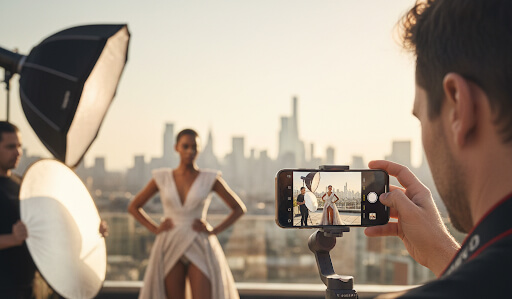
Professional photographers once scoffed at mobile cameras. In 2025, they're shooting entire campaigns on smartphones. The transformation is complete, and the results are stunning.
Hardware evolution tells part of the story. Modern flagship phones pack multiple lenses with computational photography that rivals dedicated cameras. Night mode algorithms, RAW capture, and advanced stabilization make phones legitimate professional tools.
But hardware alone doesn't explain the shift. Software innovation transformed mobile photography. Apps like Lightroom Mobile, VSCO, and Snapseed offer desktop-level editing power. Photographers work from capture to final delivery without touching a computer.
Computational photography changed everything. Multiple exposures stack automatically, AI removes unwanted objects, and smart HDR balances impossible lighting conditions. The phone does in milliseconds what used to take hours in Photoshop.
Professional acceptance came gradually, then suddenly. Major brands began accepting smartphone-shot content for advertising. Instagram proved audiences care about composition and story, not equipment specs. Gear snobbery died quietly.
The pandemic accelerated adoption. Photographers stuck at home discovered their phone's capabilities. Remote work made portability essential. Clients stopped asking what camera was used—results spoke for themselves.
Mobile-first features offer unique advantages. Live filters preview effects before shooting. Portrait mode creates professional bokeh instantly. Built-in connectivity means instant sharing and client review.
Limitations remain but narrow yearly. Low-light performance improves continuously. Telephoto lenses extend reach. Pro photographers now carry phones as backup—and increasingly as primary—cameras.
The democratization benefits everyone. Aspiring photographers start without thousand-dollar investments. Professionals travel lighter. Quality photography becomes accessible to those who couldn't afford traditional equipment.
Future developments look revolutionary. Periscope lenses push optical zoom boundaries. AI-powered subject tracking rivals professional autofocus. The gap between phone cameras and dedicated equipment shrinks to near-irrelevance for most uses.
Mobile photography isn't replacing traditional cameras—it's expanding who can create professional-quality images. That expansion enriches visual culture for everyone.
Our premium entertainment platform is currently available in select regions including the United Arab Emirates, Gulf countries, parts of Europe, and the United States. See supported regions for more information on when we will expand our service to your area. Charges may apply.
Good news: You can still enjoy our trial content while we work on expanding!